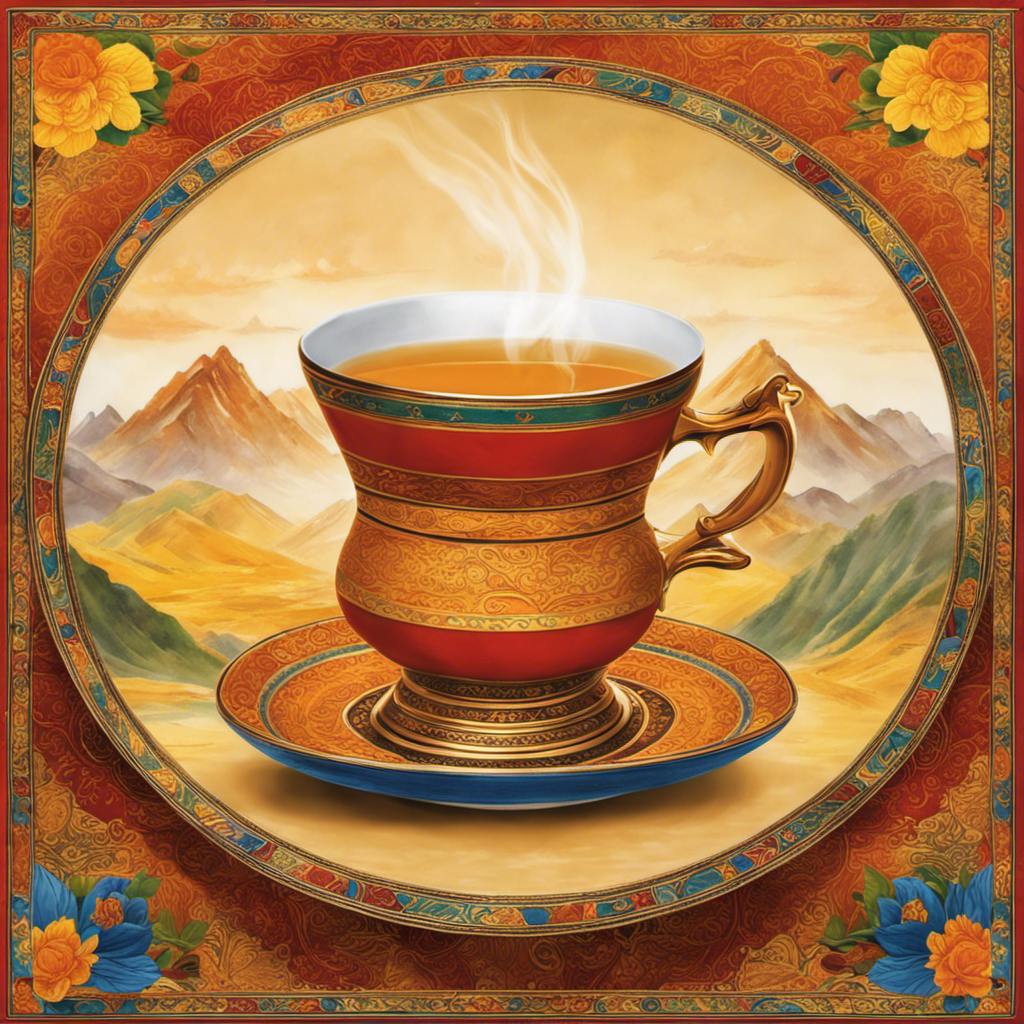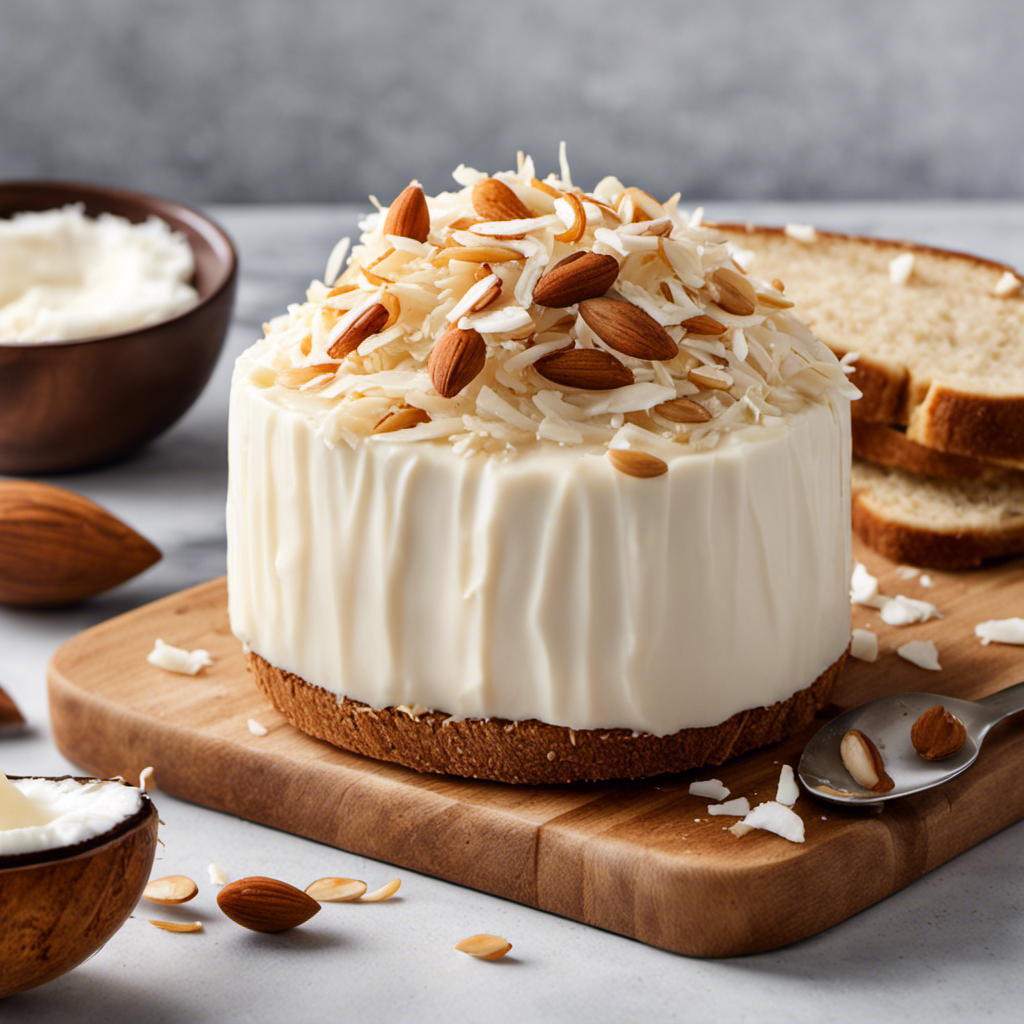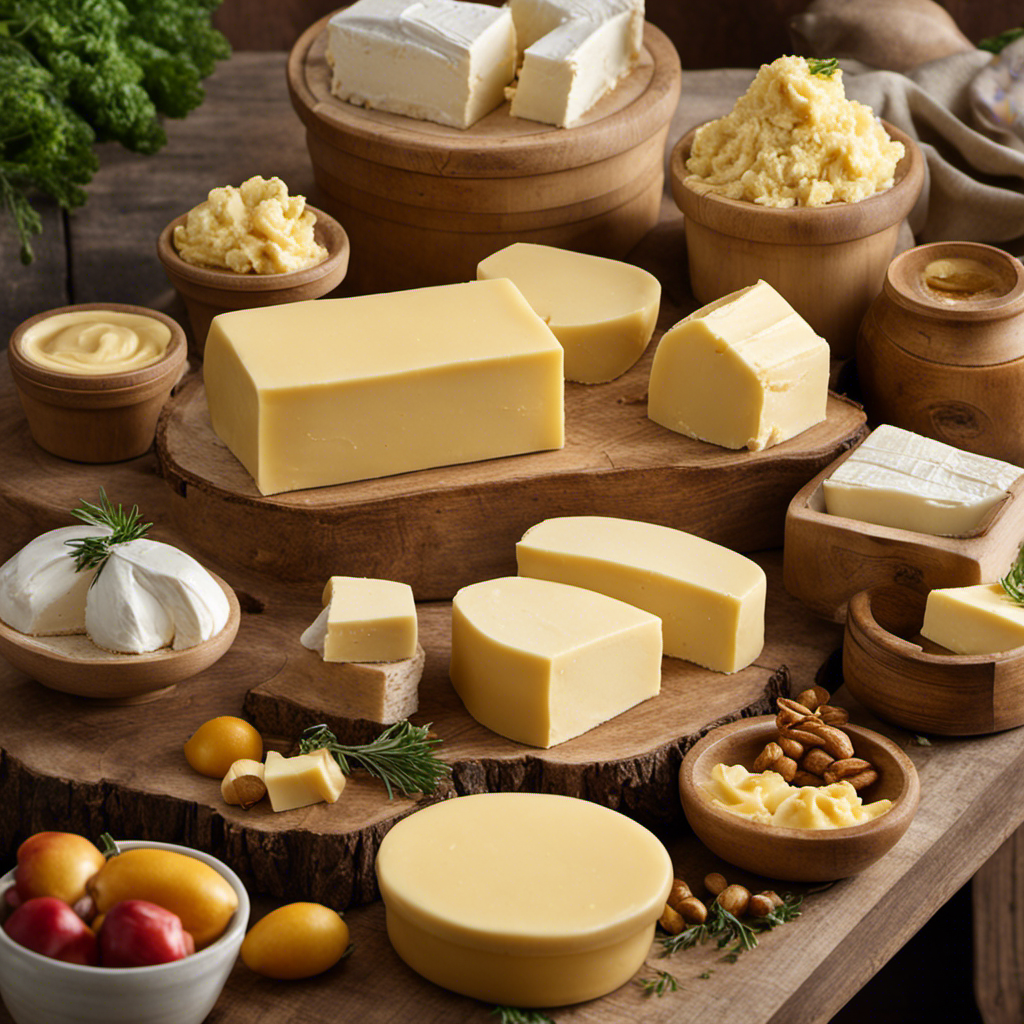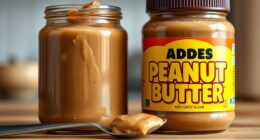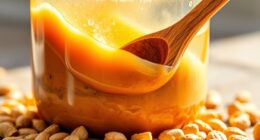I have always been intrigued by trying different types of tea, and recently I came across something called butter tea.
I was intrigued by its unique name and wanted to know more about what it actually is. So, I delved into the origins, ingredients, and health benefits of this fascinating beverage.
In this article, I’ll be sharing all the interesting details I discovered about butter tea, including its traditional preparation methods and the various variations you can try.
Get ready to embark on a journey of taste and culture as we explore the world of butter tea together.
Key Takeaways
- Butter tea originated in the Himalayan region and is popular among the people of Tibet.
- It is known as ‘po cha’ in Tibetan and is served during special occasions and gatherings, symbolizing hospitality and friendship.
- The traditional preparation involves boiling tea leaves with water, adding salt and yak butter, and vigorously churning to create a frothy and creamy texture.
- Butter tea has health benefits such as promoting weight loss, boosting metabolism, and improving cholesterol levels, making it worth considering as a beverage option.
Origins of Butter Tea
The origins of butter tea can be traced back to the Himalayan region. It holds great cultural significance and is especially popular among the people of Tibet. Known as ‘po cha’ in Tibetan, butter tea has a rich history that dates back hundreds of years. The drink is deeply rooted in Tibetan culture and is often served during special occasions and gatherings.
Tibetan influence can be seen not only in the preparation of butter tea but also in the way it is consumed, with small sips taken from a bowl or cup.
Now that we understand the cultural importance of butter tea, let’s delve into the ingredients used in its preparation.
Ingredients Used in Butter Tea
One of the key ingredients in butter tea is salt, which gives it a unique flavor. The combination of salt and butter creates a savory taste that is both rich and satisfying.
The cultural significance of butter tea cannot be overstated. It is a traditional Tibetan drink that has been enjoyed for centuries, and it holds a special place in the hearts of the Tibetan people.
Butter tea is not only popular among the Tibetan culture, but it has also gained popularity among different cultures around the world. Its distinct flavor and warming properties make it a favorite choice among tea enthusiasts everywhere.
The cultural significance and widespread popularity of butter tea highlight its ability to bring people together and create a sense of unity and connection.
-
Cultural Significance:
-
Symbol of hospitality and friendship
-
Integral part of Tibetan ceremonies and celebrations
-
Popularity among different cultures:
-
Adapted and enjoyed in India, Nepal, and Bhutan
-
Embraced by Western countries for its unique taste and health benefits
Traditional Preparation Methods
Using a traditional recipe passed down through generations, Tibetans prepare butter tea by boiling tea leaves with water and adding salt and yak butter. The preparation techniques for this unique beverage are deeply rooted in Tibetan culture and hold great significance.
To begin, tea leaves are boiled in water until they release a strong aroma and flavor. Then, the tea is strained and poured into a special wooden churn called a chandong. A generous amount of salt is added for taste, followed by the addition of yak butter. The chandong is then vigorously churned to create a frothy and creamy texture. This process not only enhances the flavor but also helps to blend the ingredients together.
The cultural significance of butter tea lies in its role as a staple in Tibetan households, symbolizing hospitality, warmth, and nourishment.
Health Benefits of Butter Tea
Boiling tea leaves with water and adding salt and yak butter creates a unique beverage that has been linked to various health benefits. Butter tea, also known as po cha, is a popular drink in Tibet and other Himalayan regions.
Here are some of the health benefits associated with butter tea:
-
Weight loss effects of butter tea:
-
The high content of healthy fats in yak butter helps to increase satiety, reducing cravings and promoting weight loss.
-
Butter tea can boost metabolism, aiding in the burning of calories and fat.
-
Impact of butter tea on cholesterol levels:
-
The unique combination of tea, salt, and yak butter has been found to improve cholesterol levels.
-
Studies suggest that the polyphenols in tea can help lower LDL (bad) cholesterol, while the healthy fats in yak butter can raise HDL (good) cholesterol.
Incorporating butter tea into your diet may offer these potential health benefits, making it a beverage worth considering.
Variations of Butter Tea
To experience the different variations of this unique beverage, you can explore the diverse flavors and ingredients added to butter tea in different regions. Butter tea is traditionally made using different types of tea, such as black, green, or pu-erh tea. Each type of tea imparts its own distinct flavor and aroma to the final drink.
In Tibetan communities, butter tea holds great cultural significance. It is a staple in their daily life and is often served to guests as a sign of hospitality. The process of making butter tea is considered an art form, passed down through generations. It involves churning yak butter with tea leaves and sometimes adding other ingredients like salt or milk.
The rich and creamy taste of butter tea is loved by many and is an integral part of Tibetan culture.
Frequently Asked Questions
Can Butter Tea Be Made Without Using Butter?
Yes, butter tea can be made without using butter. Some alternative ingredients for making butter tea include ghee or coconut oil. These alternatives still provide the health benefits of butter tea without the use of traditional butter.
Is Butter Tea Suitable for Lactose-Intolerant Individuals?
Butter tea is not suitable for lactose-intolerant individuals. However, there are lactose-free alternatives available that provide similar health benefits. These alternatives can be just as delicious and satisfying, without causing any discomfort.
Can I Add Sugar or Other Sweeteners to Butter Tea?
Yes, you can add sugar or other sweeteners to butter tea. Some people also like to enhance the flavor by adding spices like cinnamon or cardamom. Alternatively, you can use honey instead of sugar.
How Long Can I Store Butter Tea Before It Goes Bad?
Butter tea can be stored for up to 3 days in the refrigerator before it starts to go bad. To extend its shelf life, store it in an airtight container and keep it away from strong odors.
Is Butter Tea Typically Consumed Hot or Cold?
Butter tea is typically consumed hot, although some people may enjoy it cold. It has numerous health benefits, such as improving digestion and providing a source of energy. The combination of tea and butter creates a unique and flavorful beverage.
Conclusion
After learning about the origins, ingredients, preparation methods, and health benefits of butter tea, I am convinced that it is a unique and fascinating beverage.
It is interesting to note that butter tea is not only popular in Tibet but also among mountaineers and hikers due to its high caloric content. In fact, a cup of butter tea can provide up to 400 calories, making it a great source of energy for those engaging in physically demanding activities.
So, the next time you need a boost, why not try a cup of this rich and nourishing drink?
